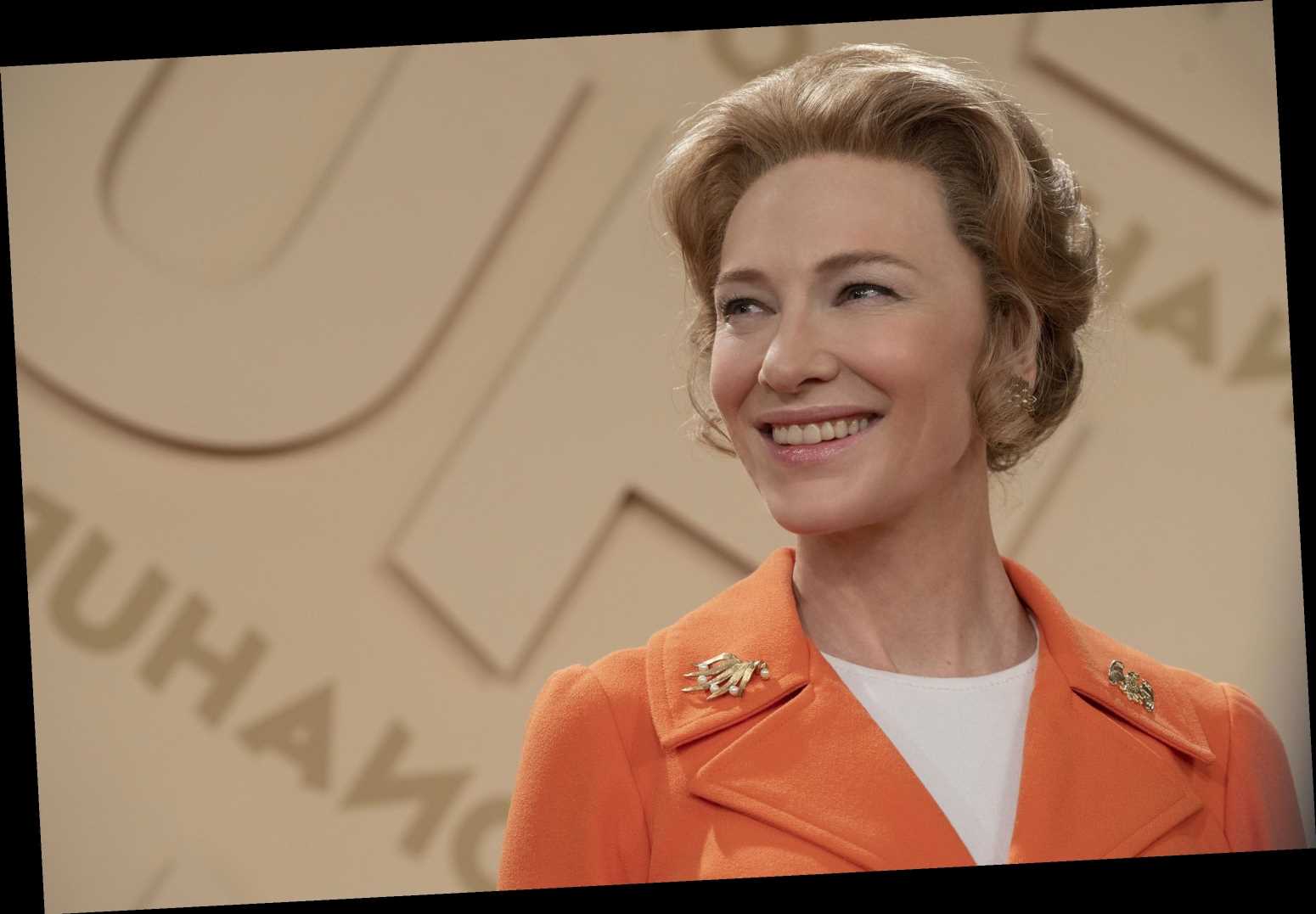While the ERA battle lines were clearly drawn in “Mrs. America” between “the libbers and anti-libbers” for costume designer Bina Daigeler (“Mulan”), the contradictions inherent in Phyllis Schlafly’s (Emmy-nominated Cate Blanchett) conservative crusade made the FX limit series a lot more interesting. Schlafly was an unfulfilled Illinois housewife with political ambitions, who wielded her media power to fight second-wave feminists to preserve traditional family values.
“Phyllis Schlafly used her strong style in public to create a very strong image for herself and this movement,” Daigeler said. “And she had to be creative in unifying this movement. On her first TV appearance, she was simply dressed with a pale blue sweater, and, I think, she was self-conscious at that moment about how it is to be on television and how much power that is.”
“But she was [smart] enough after this appearance to dress up as a public person,” Daigeler said, “and she used a lot of strong-colored [clothing] and it was always tailored to her body. And she was always very, very feminine. And I think she also used that somehow as a weapon to draw the attention to her. That was very clever and thoughtful of her.”
Cate Blanchett in “Mrs. America”
Sabrina Lantos / FX
Daigeler began by taking a deep dive into the historical research of the ’70s and ’80s to glean how Schlafly and her feminist opponents dressed (including the Emmy-nominated Uzo Aduba as trailblazing Black congresswoman Shirley Chisholm, Margo Martindale as social activist and congresswoman Bella Abzug, and Tracy Ullman as the legendary Betty Friedan). Then she worked with Blanchett (also an executive producer) in creating a character arc through her wardrobe, setting out to discover how Schlafly dressed at home and in public.
The answer was the same. “She never could really relax and loosen up. She always dressed up, she was always a little bit stiff,” Daigeler said. “For me, it was [like] she was in her own prison, always.”
Daigeler fitted Blanchett very much like the real Schlafly: an elegant ’60s housewife in the first half, favoring A-line skirt suits with pastel colors, silky blouses, scarves, pearls, and brooches. Then, for the second half, in the late ’70s and early ’80s, she highlighted darker, greenish colors, pencil skirts, and longer designs. One outfit that stood out, however, among Daigeler’s research was an orange suit from a TV debate appearance. “I was surprised a lot when I saw it,” she said. “How did that come about and why?” As a result, she had Schlafly wear orange during a pivotal luncheon in her nominated episode, “Shirley,” which contrasts Chisholm’s breakthrough 1972 Presidential campaign with Schlafly’s efforts to unify the anti-ERA movement.
“I really tried to avoid any costume-y image,” said Daigeler. “This was not a costume show about the ’70s — it was about equal rights. This show was like a documentary about Phyllis Schlafly and her movement, and the [ERA] movement, and how they are dressed feels authentic to them [like a uniform].”
“Mrs. America”
FX
Meanwhile, Aduba’s Chisholm displayed her own fashion statement as the first Black candidate from a major party to run for President, obviously fighting for both racial and gender equality. Daigeler was just as exacting in her historical accuracy, selecting original colors, graphics, and printed fabrics. Her wardrobe included a striking blue and white jacket with geometric patterns, a silk blouse with orange and black circles, and the “super chic” red, white, and blue flower-printed dress that she wore at the podium of the Democratic Convention in Miami alongside Presidential nominee George McGovern.
“She had such a special, individual way to dress, and you see in her roots these very prominent patterns,” Daigeler said. “It’s important that she stood up for Black culture. And I really tried to recreate her iconic moment during the convention.”
Overall, Daigeler described “Mrs. America” as utilizing character-driven fashion because these women liked a lot of attention in their fight for and against the ERA. “If you look at what they were fighting for, it’s still the same,” she said. “Sadly, we are still fighting for equal rights.”
Source: Read Full Article




